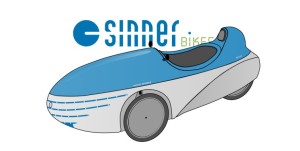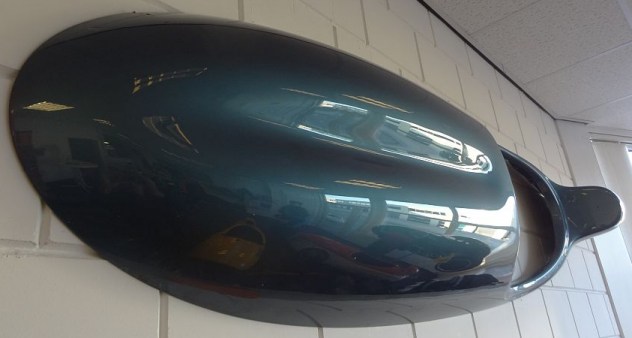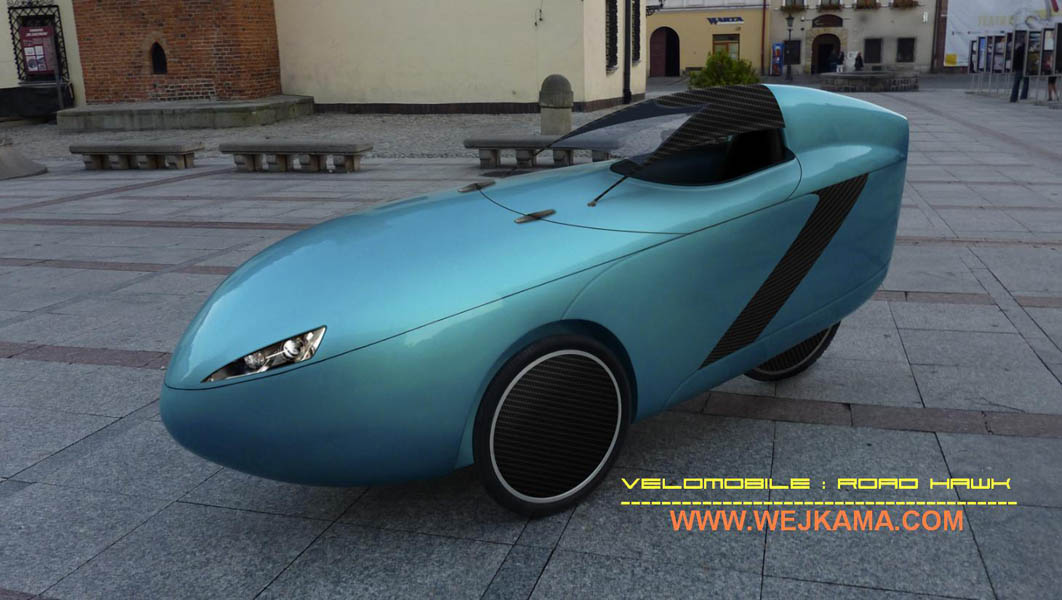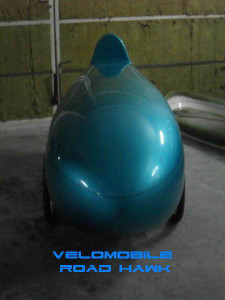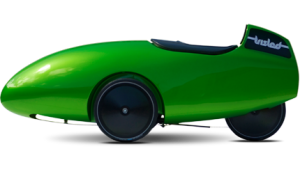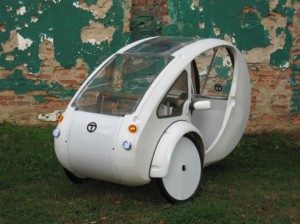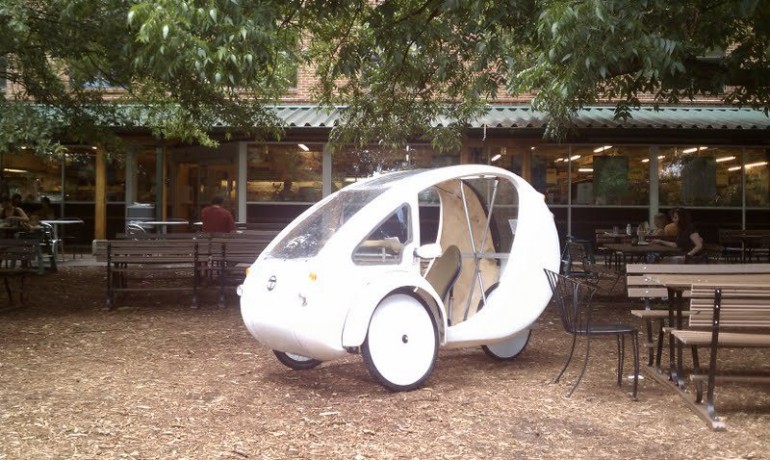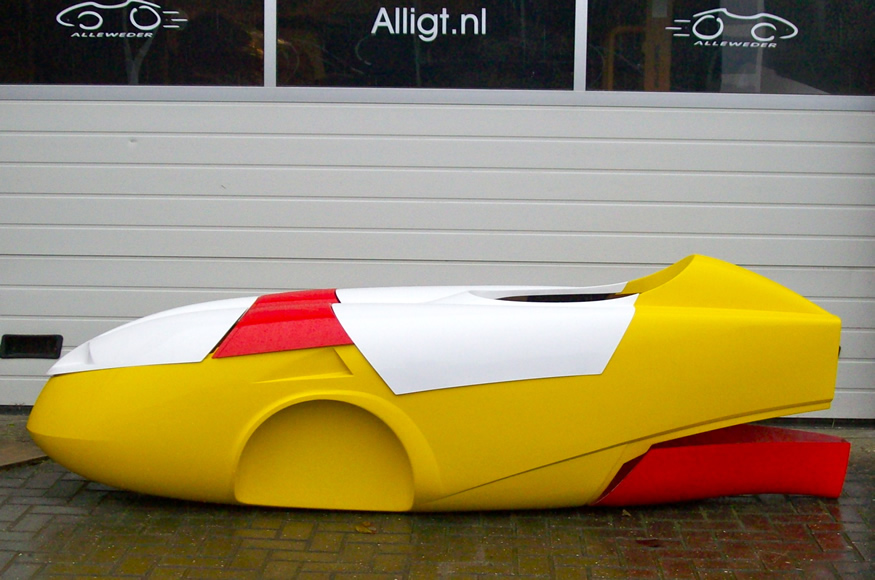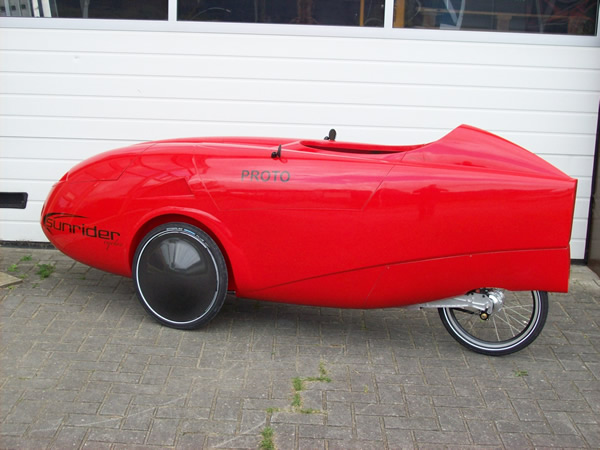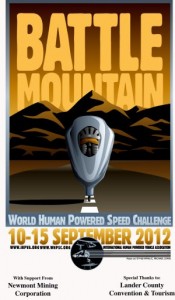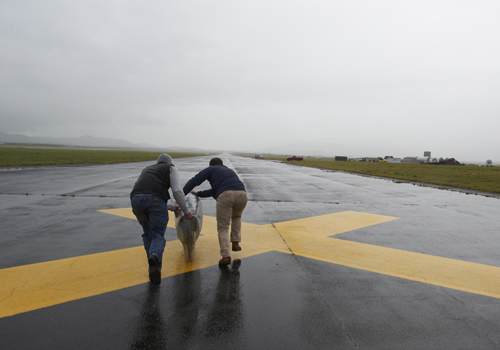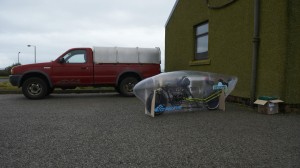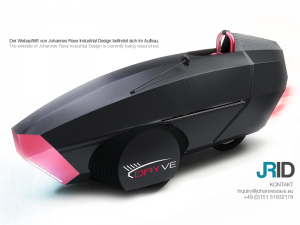After the successful crowd-funding campaign that kickstarted the ELF velomobile into production in the US comes a new campaign, this time in Europe, using the Kiss Kiss Bank Bank crowd-funding site. Regrettably all the information that can currently be gleaned, including the Cyclospace’s Kiss Kiss Bank Bank page, is in French (Carfree.fr, Roulez-different, & Velorizontal) and is scant of technical information. However with a bit of machine translation we can provide the reader with the following details
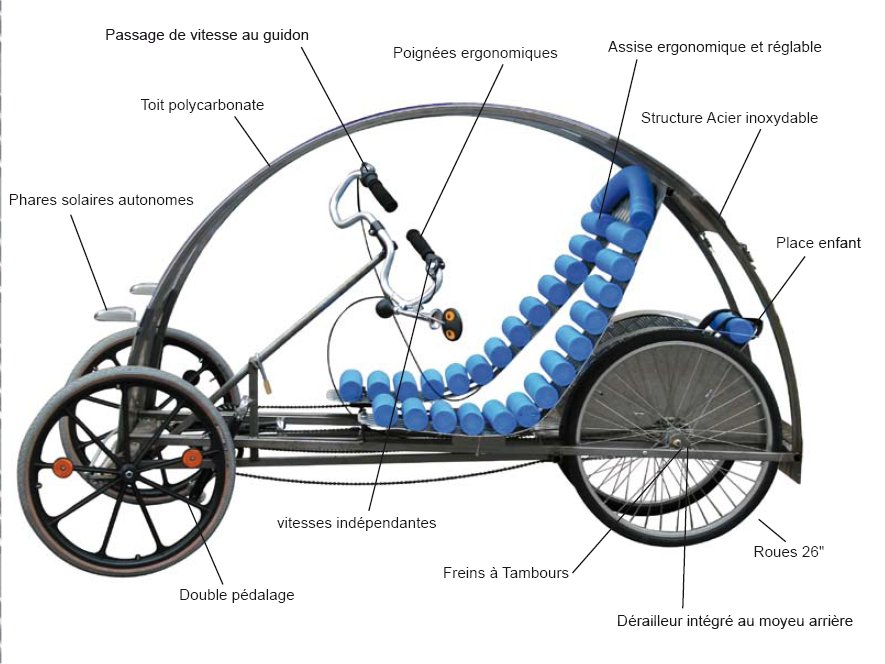 The Cyclospace, like the ELF, is a practical velomobile, with more than a nod to the original Mochet velocar of the 1930s. Unlikely to appeal to those who aspire to the high-end race capable machines, and even less likely to overtake them, it is none-the-less a relatively economical solution for those who are looking for a sociable Human Powered Vehicle, with some degree of both weather protection and aerodynamic advantage. As such it meets our definition of a velomobile.
The Cyclospace, like the ELF, is a practical velomobile, with more than a nod to the original Mochet velocar of the 1930s. Unlikely to appeal to those who aspire to the high-end race capable machines, and even less likely to overtake them, it is none-the-less a relatively economical solution for those who are looking for a sociable Human Powered Vehicle, with some degree of both weather protection and aerodynamic advantage. As such it meets our definition of a velomobile.
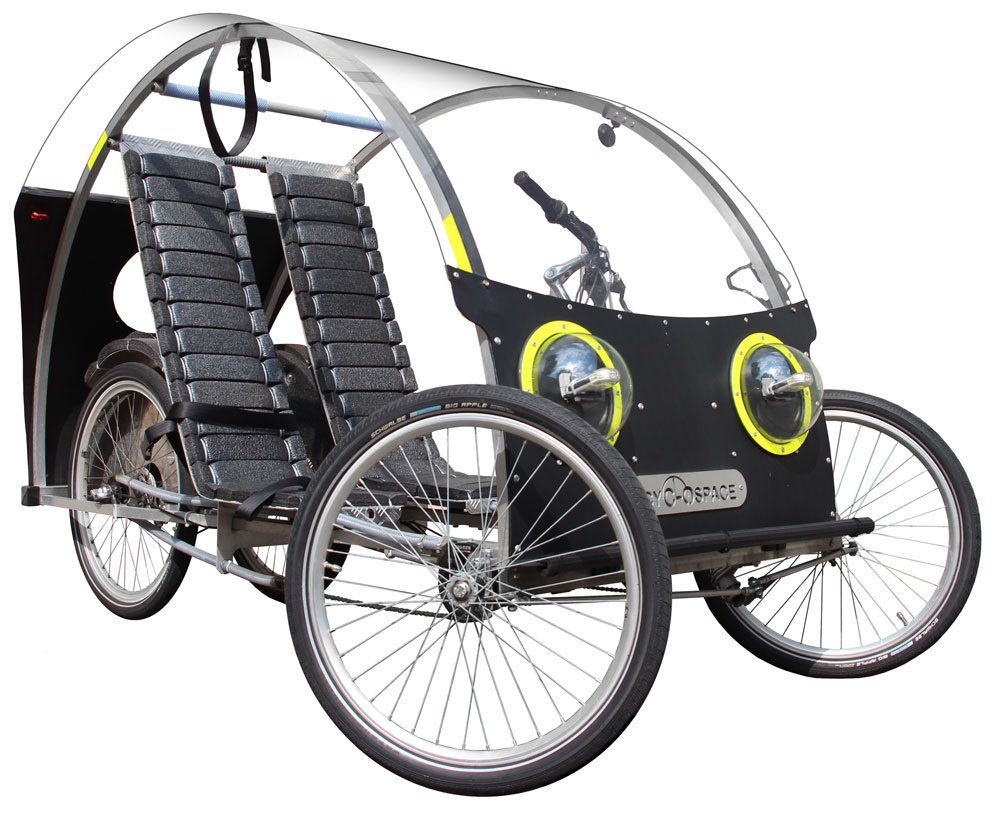 Designed by Nicolas Trüb in 2007, a French engineer with some experience in bringing designs to market. The Cyclospace “Classic” is a 2.5 seater (officially 3-seater as there is a small child seat between the rear wheels) formed from either steel or aluminium frame work with some components in carbon and stainless steel. Depending on the frame choice, the weight comes in at either 40kg or 60kg. The design is aesthetically simplistic and evidently chosen for economy of construction and can be compared to the Rhodes Car produced in the US. Those used to the double curvature and sculpted forms of the established velomobile designs seem to have a problem with the aesthetic, however, as others have pointed out, it is not really fair to compare a Citreon 2CV with a Ferrari. The following video might give some taste of the ride.
Designed by Nicolas Trüb in 2007, a French engineer with some experience in bringing designs to market. The Cyclospace “Classic” is a 2.5 seater (officially 3-seater as there is a small child seat between the rear wheels) formed from either steel or aluminium frame work with some components in carbon and stainless steel. Depending on the frame choice, the weight comes in at either 40kg or 60kg. The design is aesthetically simplistic and evidently chosen for economy of construction and can be compared to the Rhodes Car produced in the US. Those used to the double curvature and sculpted forms of the established velomobile designs seem to have a problem with the aesthetic, however, as others have pointed out, it is not really fair to compare a Citreon 2CV with a Ferrari. The following video might give some taste of the ride.
So far the Cyclospace has seen limited production, with a total of 7 machines on the road, one as far away as Azerbaijan! It is unclear if the various prototypes are included in this figure. Should you wish to acquire a Cyclospace Classic for yourself you can order one through La Boutique du Futur for collection in France.
The Cyclospace Classic has seen continuous development since 2008 with plenty of feedback from real world testing. However development is now going up a gear which is where the crowd-funding campaign comes in. In 2013 M. Trüb began construction of a 5-seater prototype, to be called the Cyclospace XXL. The new model design will have 4 sets of pedals and a 250W electric assist system with solar charging.
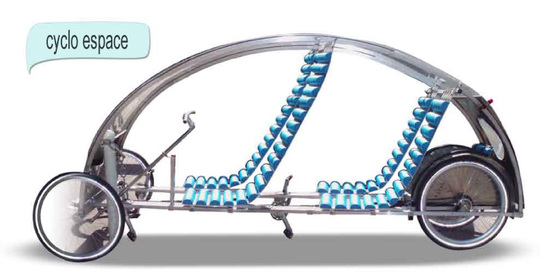 Funds are now needed to finalise the prototype and take the design into production. Should the campaign’s rather modest goal of €4,600 be broken investment in further designs are promised. These include a pedal-powerd trailer, compatible with both the Cyclospace Classic and the Cyclospace XXL, and a narrow single seater model. The combination of the XXL and trailer is interesting as it offers the prospect of a staggering 8 person sociable cycle experience, a HP Minivan, albeit only 6 would be providing power and the remaining 2 passengers would have to be small.
Funds are now needed to finalise the prototype and take the design into production. Should the campaign’s rather modest goal of €4,600 be broken investment in further designs are promised. These include a pedal-powerd trailer, compatible with both the Cyclospace Classic and the Cyclospace XXL, and a narrow single seater model. The combination of the XXL and trailer is interesting as it offers the prospect of a staggering 8 person sociable cycle experience, a HP Minivan, albeit only 6 would be providing power and the remaining 2 passengers would have to be small.
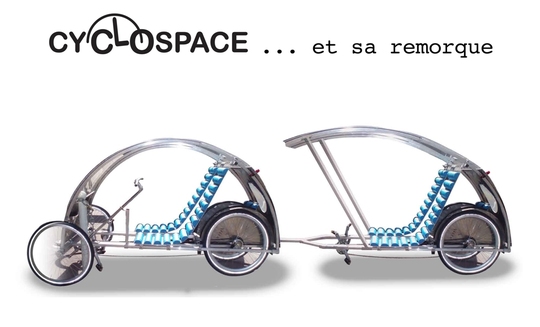 The pledges range from €6, for a signed print, all the way to €5,400, for a Cyclospace XXL you can call your own.
The pledges range from €6, for a signed print, all the way to €5,400, for a Cyclospace XXL you can call your own.
Finally a brief video of M. Trüb enjoying his own creation.


